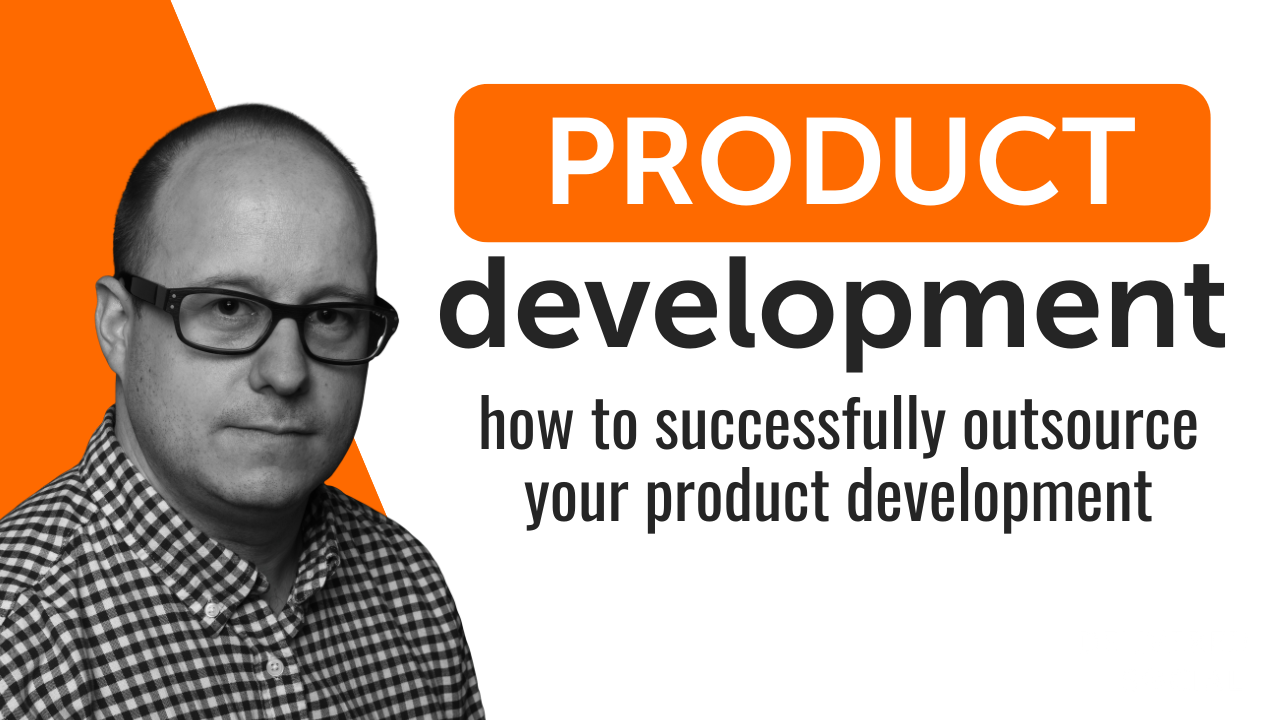
Guide to Outsourced Product Development in 2024
Although it was formerly an unusual business strategy, organizations of all sizes today routinely use outsourced product development. Roughly 74% of companies outsource IT services, and 87% of them say they want to keep or raise their IT budgets. These numbers are from Statista. This tried-and-true method frees up company founders’ time to concentrate on other essential business duties while enabling them to bring usable software to market quickly.
Outsourced Product Development: What Is It?
Hiring outside service providers to design, create, and build a software solution on your behalf is known as outsourcing product development.
You may assign certain activities or phases of the product development process to a service provider like Mangosoft, or you can outsource the full process (including project management and maintenance).
For instance, in a mobile application development project, you may choose to retain core competencies like coding and feature development in-house while contracting out work such as product UI design or beta software testing to outside specialists.
In this approach, you may sometimes use global experience at a cheaper cost for particular capabilities that you lack in-house. Furthermore, your internal staff may concentrate on company objectives and key capabilities.
Advantages of Outsourcing Product Development
Large talent pool. When outsourcing product development, product owners may access a worldwide talent pool that includes designers, business analysts, project managers, and software engineers. They may easily find and employ whatever professional they need.
Deep knowledge. Businesses may also benefit from the outsourcing partner’s expertise and best practices via this cooperative approach. This partner can provide insights into current industry trends, user needs, and technological advancements.
Diminished outlays. Because outsourcing contractors may offer services at a lesser cost than recruiting in-house professionals, product development outsourcing lowers expenditures. It is not necessary to pay for additional operating expenses or to keep workers under this collaboration arrangement.
Quick scaling. Product owners may also scale their development teams up or down according to need using this work style. When businesses outsource, they don’t have to worry about the overhead expenses associated with staffing, training, and management.

When to Outsource Product Development?
Selectively, product design outsourcing might be a wise strategic decision, but timing is everything. In the following situations, outsourcing might be most advantageous:
Insufficient Internal Experience
Each project has certain technological requirements. Sometimes, even with their competence, members of your present team may not have the specialized knowledge or industry experience needed for a new project. This gap may be filled via outsourcing, which gives access to knowledgeable experts in the required field. In addition, new platforms and tools are always emerging as technology advances. It may be more lucrative to outsource to professionals who are knowledgeable with these cutting-edge technologies rather than spending time and money on training.
Short Deadlines
Sometimes, the dynamics of the market demand a quick product introduction. When you have limited in-house resources and are racing against time, outsourcing might be your saving grace. Outside teams, particularly those with expertise in agile approaches, may accelerate the development process. This guarantees that you take advantage of possibilities before rivals and promptly satisfy market wants.
Originality and a Range of Views
Different points of view are typically the source of innovation. Through outsourcing, one may access worldwide talent and bring new, creative ideas to the table. With their diverse backgrounds in a range of projects and sectors, external teams might provide insights and ideas that an internal team might not be able to. The creation of goods that really stand out in the marketplace may be sparked by this variety.
The Best Models for Outsourcing Product Development
A company’s outsourcing strategy must include selecting the appropriate outsourcing model. The rock, paper, scissors game concept applies to these models: we are unable to determine which is superior. One is better than the other based on your needs, and they’re all necessary to strike a balance while handling outsourcing issues.
Staff Growth Model
This might be the most basic kind of outsourcing. It involves setting up a development team and a service provider workspace. All other important aspects, such as process monitoring and assessment and project management, are within the customer’s purview. Personnel management is no different. The provider is in charge of making sure employees show up for work, allocating vacation time, making payments, etc. It is the customer’s responsibility to hire employees, organize teams, and assign responsibilities.
Dedicated Team Model
In this instance, the supplier is in charge of low-level tasks, people management, construction quality, and team formation. Instead of a collection of experts working on menial duties, you have a team that participates in many projects or provides a particular, sophisticated service. The provider’s goal is to hire staff. The supplier develops the team’s working plan and then implements it. The supplier also gains control over micromanagement and regulating operations.
In project management, however, the client often makes choices. Different people have varying levels of responsibility; some want total autonomy over the project, while others let an outside team start inside initiatives. There are instances when the product is fully converted to the supplier’s service.
Project-Based Model
This is a more obvious choice. It suggests that the supplier has a predefined objective that they must accomplish in a certain amount of time. Typically, the objective consists of a list of specifications that the created product must meet.
The definitions of various outsourcing models give rise to their advantages and disadvantages. Remember that you will pay more for the same job done in the same amount of time if you give the supplier greater responsibility for the project or the outcome of the work, from staff management to total control of the process.

The Process of Outsourced Product Development: Described
One may argue that maintaining an internal team is more difficult than outsourcing to offshore software developers. You don’t need to supervise the developers’ process or be hands-on. You will still need to oversee the offshore development team, keep an eye on developments, and provide timely feedback.
Here’s how to hire your first contractor from outside your company.
Step1: Establish Your Objectives
Before you look for possible offshore developers to collaborate with, be clear about what you need. While some creators may want to add new features to already-existing software, others may be searching for experience in creating an app from the ground up. Make a list of the requirements for your project to assist you in selecting the best vendor with the necessary background or skill set.
Step 2: Select a Companion
Software development companies that specialize in the outsourcing model are many. Due diligence must be done in order to choose one that exhibits reliability and has a stellar record. Make sure the candidate’s pitch and the customer testimonials you review line up.
Step 3: Select A Collaboration Model
Outsourced development companies often offer various strategies to help startups stay competitive in quickly evolving settings. Choose which approach will work best for you: fixed-cost, time and material, or employing a specialized crew. When selecting an outsourcing strategy, take into account the project’s unpredictability, timeframe, and financial implications.
Step 4: Determine Communication Guidelines
Ensuring that your project is proceeding according to the prearranged timeline requires clear and smooth communication. This is only feasible if both sides agree upon a certain communication structure, such as deciding on a communication tool like Slack and establishing a timeline for progress updates.
Step 5: Establish The Partnership formally
It’s important to negotiate and clearly lay out the conditions of the agreement after you’re happy with a certain provider. Before beginning the formal partnership, be sure that all sides are aware of the terms of the agreement.
How Much Does Outsourced Product Development Cost?
Eastern Europe is now home to more than a million highly skilled developers, making it one of the world’s leading hubs for IT outsourcing. Romania, Poland, and Ukraine are its main outsourcing centers; offshore development charges typically range from $20 to $50.
Eastern Europe has reduced development costs, but the quality is equally promising. The presence of technical educational institutions in this area has led to the development of strong and established IT knowledge. The relative linguistic competency of Eastern Europe—the majority of contractors speak English—is another advantage of outsourcing IT.
Conclusion
Statistics show that the worldwide market for IT outsourcing will be valued at $425.19 billion by 2026. One of the sectors most impacted by business process outsourcing is IT product outsourcing. Talent, cost, and technology are the three main areas where firms today are competing more and more, and these elements are still important. And the longer they continue to be important, the more appealing outsourcing seems to companies.
Enterprises may outsource product development to get access to a worldwide pool of highly skilled workers, often at reasonable rates. This helps enterprises outperform their rivals and promotes expansion, creativity, and operational efficiency.
Interested In Working Together?
Introducing Delivered Social. We're The Most-Rated Digital Agency In Surrey & Hampshire – We've Got To Be Doing Something Right.
Delivered Social is a digital marketing agency with one mission—to help businesses grow. We're famous in Guildford and Portsmouth for our social clinics. We believe in free advice. We build lasting relationships because our team prides itself on being helpful, which our clients appreciate.
If you are looking for a new website or an agency to manage your social media presence, we can help.
If you need something slightly different, here's a super handy list of all our services, or you can always email us.























